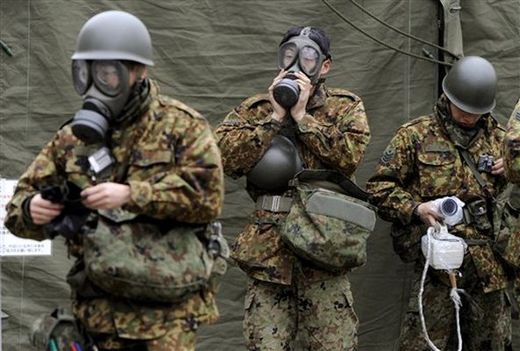
Fukushima - Japan suspended operations to prevent a stricken nuclear plant from melting down Wednesday after a surge in radiation made it too dangerous for workers to remain at the facility.
Chief Cabinet Secretary Yukio Edano said work on dousing reactors with water was disrupted by the need to withdraw.
Earlier officials said 70 percent of fuel rods at one of the six reactors at the plant were significantly damaged in the aftermath of Friday's calamitous earthquake and tsunami.
News reports said 33 percent of fuel rods were also damaged at another reactor. Officials said they would use helicopters and fire trucks to spray water in a desperate effort to prevent further radiation leaks and to cool down the reactors.
The nuclear crisis has triggered international alarm and partly overshadowed the human tragedy caused by Friday's double disaster, which pulverized Japan's northeastern coastline, killing an estimated 10,000 people.
Authorities have tried frantically since last Friday's earthquake and tsunami to avert an environmental catastrophe at the Fukushima Dai-ichi complex in northeastern Japan, 170 miles (270 kilometers) north Tokyo.
The government has ordered some 140,000 people in the vicinity to stay indoors. A little radiation was also detected in Tokyo, 150 miles (240 kilometers) to the south and triggered panic buying of food and water.
There are six reactors at the plant, and three that were operating at the time have been rocked by explosions. The one still on fire was offline at the time of the magnitude 9.0 quake, Japan's most powerful on record.
The Nuclear Industrial and Safety Agency estimated that 70 percent of the rods have been damaged at the No. 1 reactor.
Japan's national news agency, Kyodo, said that 33 percent of the fuel rods at the No. 2 reactor were damaged and that the cores of both reactors were believed to have partially melted.
"We don't know the nature of the damage," said Minoru Ohgoda, spokesman for the country's Nuclear Industrial Safety Agency. "It could be either melting, or there might be some holes in them."
Meanwhile, the outer housing of the containment vessel at the No. 4 unit erupted in flames early Wednesday, said Hajimi Motujuku, a spokesman for the plant's operator, Tokyo Electric Power Co.
Japan's nuclear safety agency said fire and smoke could no longer be seen at Unit 4, but that it was unable to confirm that the blaze had been put out.



We are witnessing the collapse of a great nation that has been plaqued by a fierce poison. What are they going to do? Where are they going to go? In 1923, Japan had an earthquake that killed over 100,000 people but there was no radiation contamination to deal with. It is high time Nuclear Plants switch to Thorium or nix the whole idea.